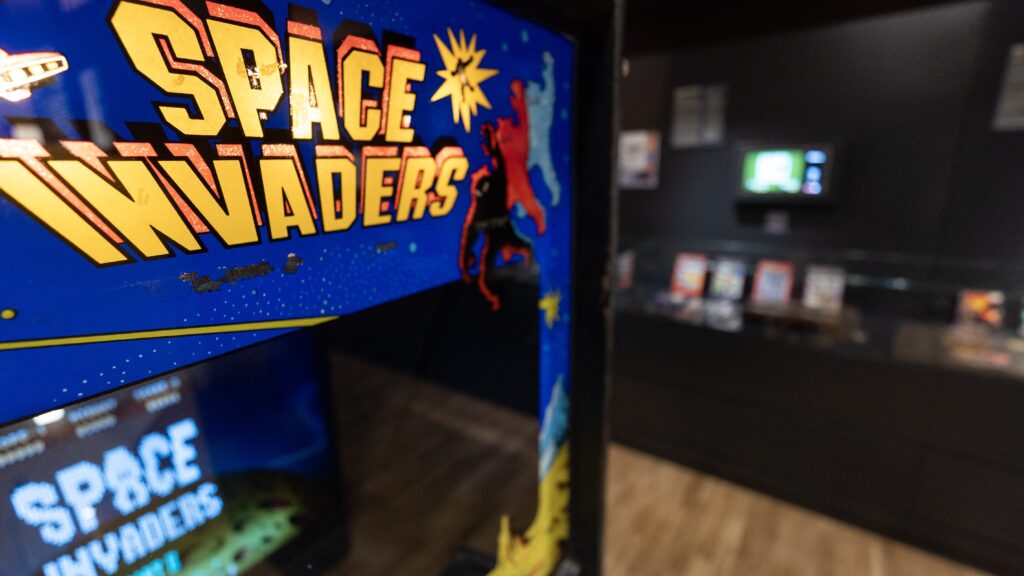
2216955087
In a recent interview with Time Extension, Tomohiro Nishikado, the legendary designer behind the iconic 1978 arcade game Space Invaders, shared insights into his pioneering work at Taito and the challenges he faced in the evolving video game industry. Nishikado’s reflections offer a fascinating glimpse into the early days of electronic gaming, a time when the potential of video games was just beginning to be realized.
Space Invaders is often credited as one of the most influential video games of all time. Upon its release, it became a global phenomenon, reportedly causing a shortage of 100-yen coins in Japan due to its immense popularity. Nishikado’s journey into game design began at a Taito subsidiary, where he worked on early arcade games that combined electronic and mechanical elements. His first project, Sky Fighter, used mirrors to create the illusion of flight, a technique that proved to be a hit with players.
The Genesis of Electronic Gaming
Nishikado’s interest in electronic video games was piqued by the American game Pong, developed by Atari. “Due to my electronics background, I had a strong interest in these video games,” Nishikado explained. He reverse-engineered Pong and created a soccer game, despite skepticism from Taito’s sales team, who doubted the commercial viability of electronic games. “They always said that ‘these things will never sell,'” Nishikado recalled.
In response to the market saturation of Pong clones, Nishikado innovated by introducing two players on each side of the screen in his soccer game, followed by a basketball game featuring human-like characters, a first in video game history. These early experiments laid the groundwork for his later success with Space Invaders.
Creating Space Invaders: A New Era in Gaming
Space Invaders marked a significant shift in game design, as it was the first of Nishikado’s projects to utilize software coding. “I wrote that in assembly,” he said, referencing the use of the 8080 CPU assembler. The software approach allowed for greater flexibility, enabling the same hardware to run different games. Nishikado was inspired by Atari’s Breakout, appreciating its simplicity and abstract design. This led him to focus on creating a game where the fun factor, rather than graphics, was paramount.
“I felt that if you switched the blocks in Breakout into a character, it might be more fun,” Nishikado said. “The basic concept of Space Invaders was to clear the screen of enemies.”
Drawing from the sci-fi zeitgeist of the time, influenced by the impending release of Star Wars and HG Wells’ The War of the Worlds, Nishikado decided on aliens as the adversaries, avoiding the controversial depiction of human targets. This creative decision, coupled with a demo loop showcasing gameplay, contributed to the game’s unprecedented success.
The Impact and Legacy of Space Invaders
Despite its monumental success, Nishikado expressed frustration over hardware limitations that prevented the aliens from moving faster. Nonetheless, Space Invaders became a cultural icon, reshaping the video game landscape. However, Nishikado’s career path took unexpected turns. Following the game’s success, he was tasked with developing various versions of Space Invaders and later moved away from game development to work on projects like “robots for amusement facilities.”
Nishikado also revealed that he developed a prototype for a new gaming console, which was ultimately rejected by Taito’s sales team, who were focused on arcade games. This decision reflects the significant influence the sales team wielded over creative projects at the time.
Lessons from a Pioneer
Reflecting on his career, Nishikado emphasized the importance of creative autonomy in game development. “Creators should try to make a game on their own first, and then it should expand into a larger project,” he advised. He encouraged aspiring game developers to learn from older games, focusing on core design and playability rather than graphics.
“The point is that it needs to be creatively led first, before the management gets involved,” Nishikado stated. “If you don’t try to make something first, you will never know if it’s fun or not.”
Nishikado’s insights underscore the enduring value of creativity and innovation in the gaming industry, lessons that remain relevant as new generations of developers continue to push the boundaries of what games can achieve.







